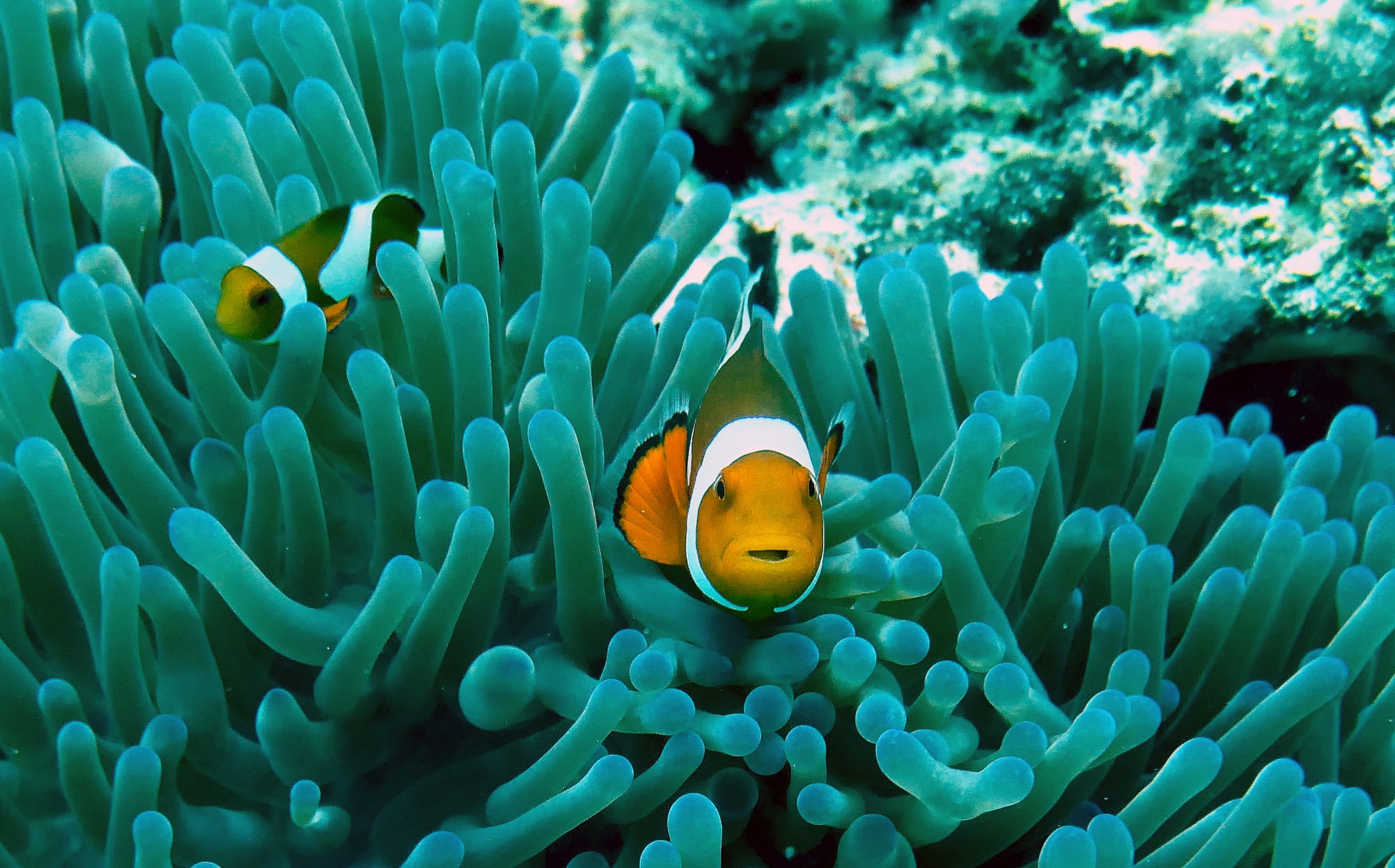Friend or Foe? Symbiotic Relationships in the Oceans
Everyone has that one friend who kind of sucks. You invite them to a party and they “forget” to bring something and eat most of the food. Take them out for a drink and they order more on your dime. Luckily, we might also have great friends worth keeping around. The ones who help you move, or listen to you complain about having to sit through another Zoom meeting.
Interestingly, interactions between species in the ocean can look a lot like some of our friendships. Some want to help us, while others want to take us for all we are worth. Coined symbiotic relationships, these different types of interactions occur frequently and help to bring balance within the marine world.
Mutualism

You scratch my back, I’ll scratch yours.
Mutualism is a symbiotic relationship where both species benefit from each other. One of the most famous examples of this are between coral reefs and zooxanthellae. Zooxanthellae are photosynthetic algae that live inside coral tissue. The coral provides a safe haven and in return, zooxanthellae produce oxygen to help corals remove waste.

More specifically, zooxanthellae supply coral with glucose, glycerol and amino acids which are the products of photosynthesis. Coral will use these to produce proteins, fats and carbohydrates which are all the ingredients needed to make calcium carbonate. That’s the stuff coral reefs are made out of!
Parasitism

I’ll take all you got, thanks.
Now let’s learn what it means to not be a good neighbor. Parasitism is the type of symbiotic relationship where only one species benefits while the other is harmed.
The Tongue-eating Louse are a parasitic isopod that likes to crawl in a poor fish’s mouth, eat their tongue, claim squatter’s rights and never leave. The freaky part about this process is that numerous louse will invade as juveniles through the fish’s gills and then mature into males. After that, one of the males will transform into a female through a process called protandrous hermaphroditism. Yikes.
Be a good neighbor and don’t be like the Tongue-eating Louse.
Commensalism

Uh, can I help you?
Commensalism is a type of symbiotic relationship in which one species benefits whereas the other species is neither helped or harmed.
Our charismatic megafauna, the Humpback Whale can usually be seen with several barnacles attached along its head or chin. The barnacles are not hurting the whale in anyway, but reap all the benefits. Stable place to live, a free ride, access to plenty of food, barnacles are living the good life. But how does this encounter even happen?
It’s still unclear how barnacle larvae attach themselves to whales, but they will often cross paths near surface waters where whales feed. As the barnacles mature, they build a tough shell around their bodies and form tube-shaped cavities within that allow them to anchor onto the whale.
Because of the whales’ incredible size, they are able to support large colonies of barnacles that can weigh up to 1,000 pounds!
Mimicry

Of course we’re related!
Less common, but still relevant is mimicry. This symbiotic relationship allows one species to mimic another, usually through use of a color or pattern.
A beautiful example of this is the Mimic Octopus. Discovered in 1998 off the coast of Sulawesi in Indonesia, the Mimic Octopus, Thaumoctopus mimicus, is the first known species to take on the characteristics of multiple marine organisms. Some animals they mimic include, sole, lion fish and sea snakes.
The Mimic Octopus is so intelligent that is it able to discern which dangerous sea creature to impersonate that will pose the greatest threat. For example, the Mimic Octopus has been observed mimicking a Banded Sea Snake when it was attacked by territorial damselfish.
For the Mimic Octopus, it pays big to be the copycat.
Interested in more cool sea creatures? Check out these creepy crawlies.
